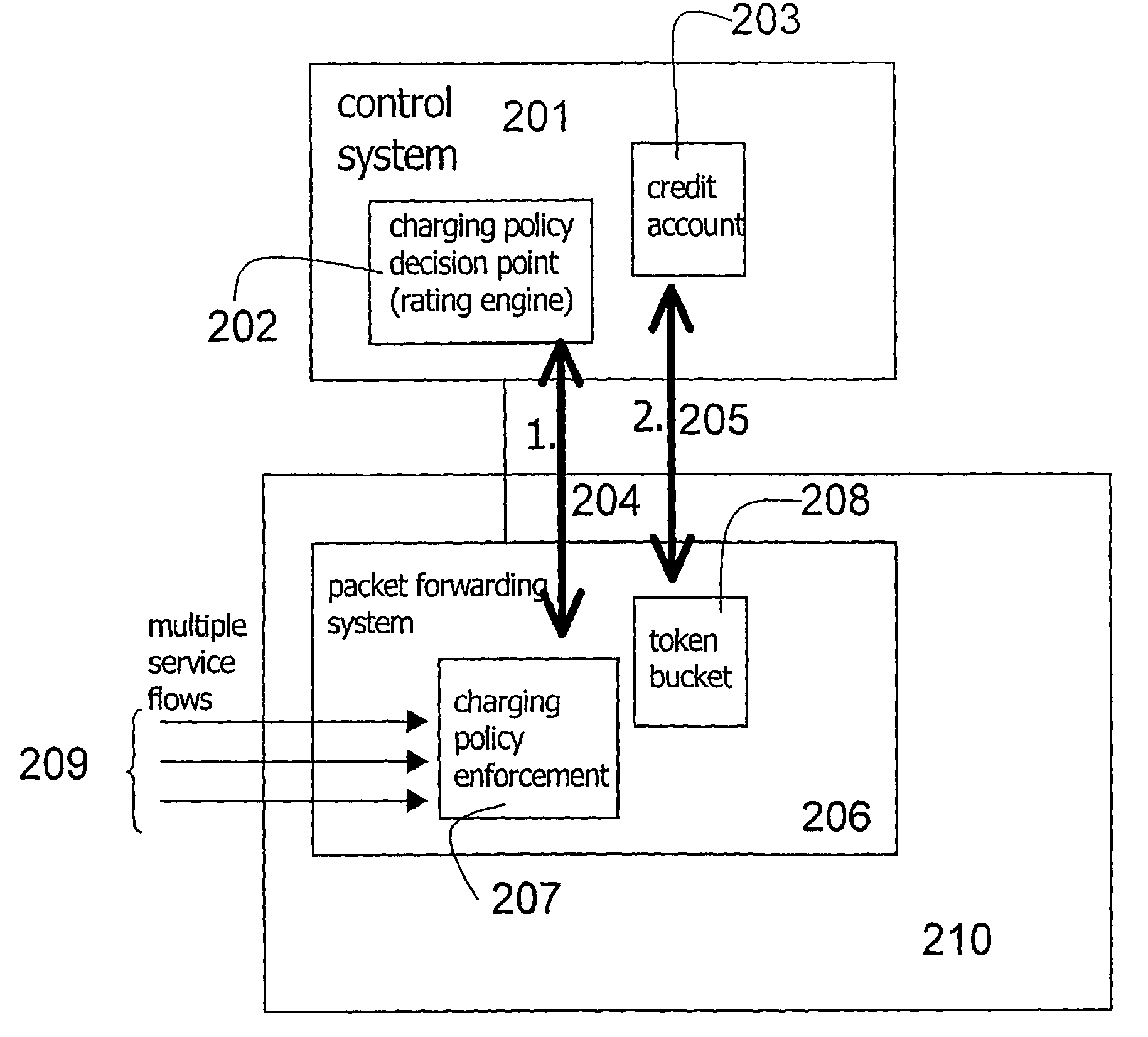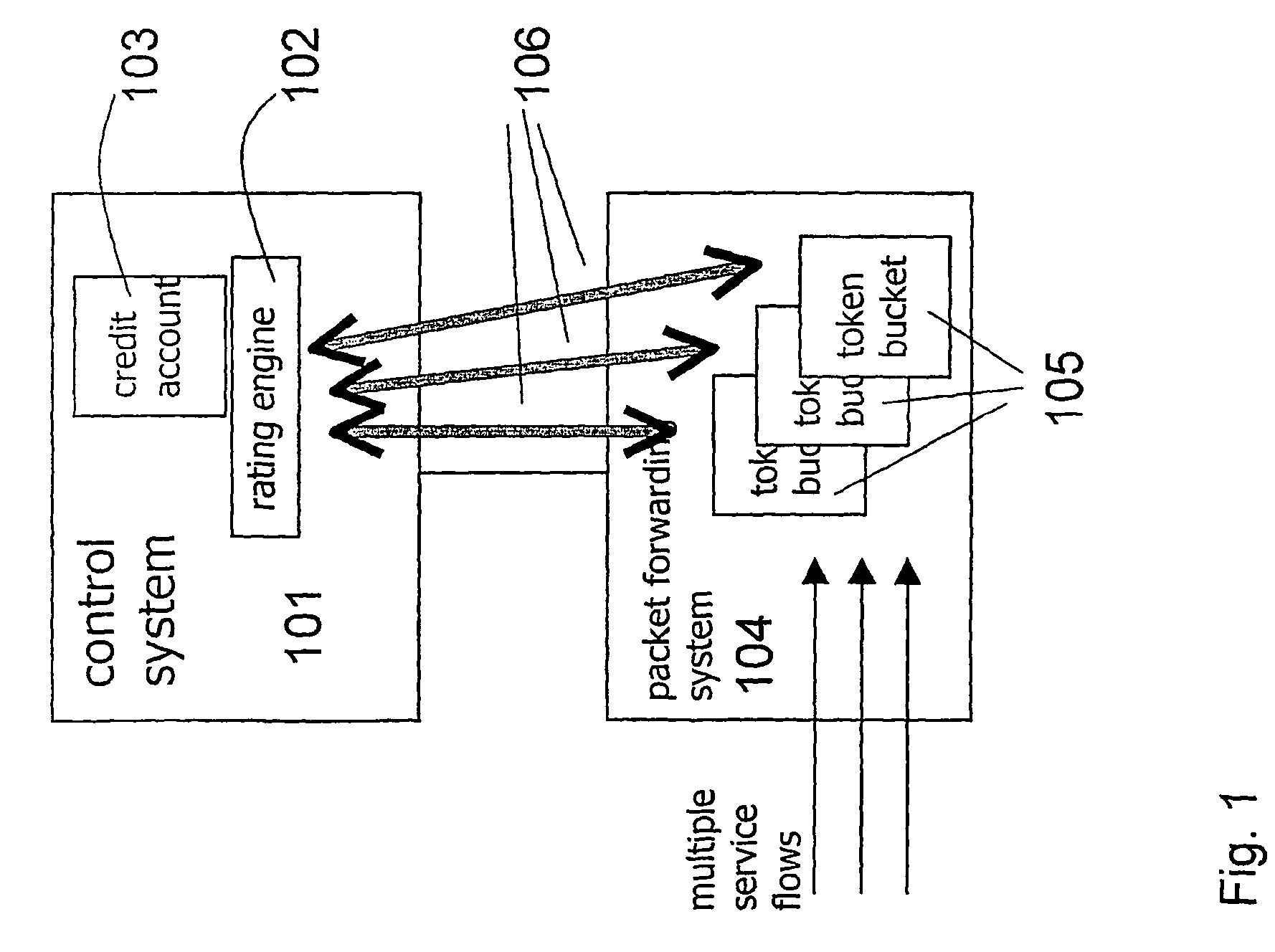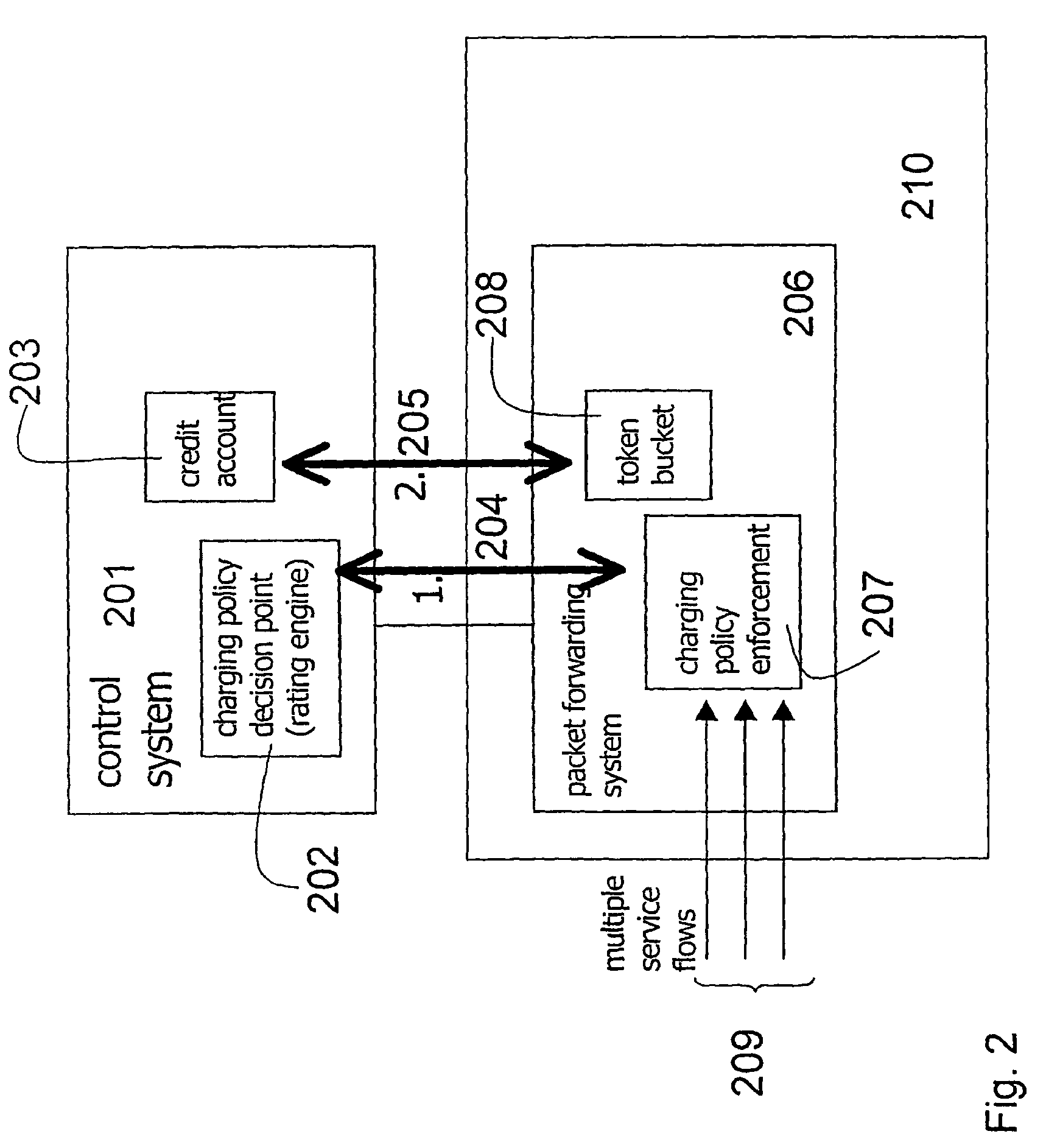System for providing flexible charging in a network
a network and flexible charging technology, applied in data switching networks, frequency-division multiplexes, account details/uasge, etc., can solve the problems of multiple token bucket solutions subject to the above mentioned unnecessary reservations, reduce the risk of emptying, reduce the distribution of token reservations, and reduce the load of signalling
- Summary
- Abstract
- Description
- Claims
- Application Information
AI Technical Summary
Benefits of technology
Problems solved by technology
Method used
Image
Examples
example 1
[0042]When a user logs on to a communication system comprising the charging system of the present invention, the serving element initiates a control signalling sequence between the serving element and the control system.
[0043]The control system determines the set of service identifiers this user is allowed to use. The rating engine 301 of the control system calculates a charging policy 304 based on a tariff plan 303 and other input data e.g., Time of Day (ToD), the user's roaming status, the aggregated transferred data volume for the user and other user specific usage history. Current usage behaviour is also utilised at the calculation of the user rating table if the user already is logged on, e.g. in a situation when the token bucket of the user runs empty, i.e. one validity condition is not fulfilled, and the serving element requests a new user rating table from the control system. This calculation is illustrated in FIG. 3 and is called dynamic pre-rating. The charging policy comp...
example 2
[0094]FIGS. 7a and 7b show an example where the operator's WAP gateways are placed at the subnet 100.18.0.0 / 16. Assume that these WAP gateways also are arranged to function as HTTP proxies. The service filters 1 and 2 both match packets to and from that subnet. Filter 1 is set to match the transport protocol Wireless Session Protocol (WSP) and invoke PIF number 1 according to the PIF pointer in FIG. 7a, while filter 2 will match the transport protocol HTTP and invoke PIF number 2. Assume that an incoming packet is a WAP-packet leading to a match for WSP. PIF 1 now employs an identifier data in the PIF configuration, in this case the URL / URI. In this example, it checks for the domain names of the MMS-centers of the operator. If the packet's WSP-header contains any of these domain names the resulting service class is 14. If the packet contains any other URL (the wild card *), the packet is non-MMS WAP traffic and is classified as service class 15.
[0095]Referring back to FIG. 7a, the s...
PUM
 Login to View More
Login to View More Abstract
Description
Claims
Application Information
 Login to View More
Login to View More - R&D
- Intellectual Property
- Life Sciences
- Materials
- Tech Scout
- Unparalleled Data Quality
- Higher Quality Content
- 60% Fewer Hallucinations
Browse by: Latest US Patents, China's latest patents, Technical Efficacy Thesaurus, Application Domain, Technology Topic, Popular Technical Reports.
© 2025 PatSnap. All rights reserved.Legal|Privacy policy|Modern Slavery Act Transparency Statement|Sitemap|About US| Contact US: help@patsnap.com



